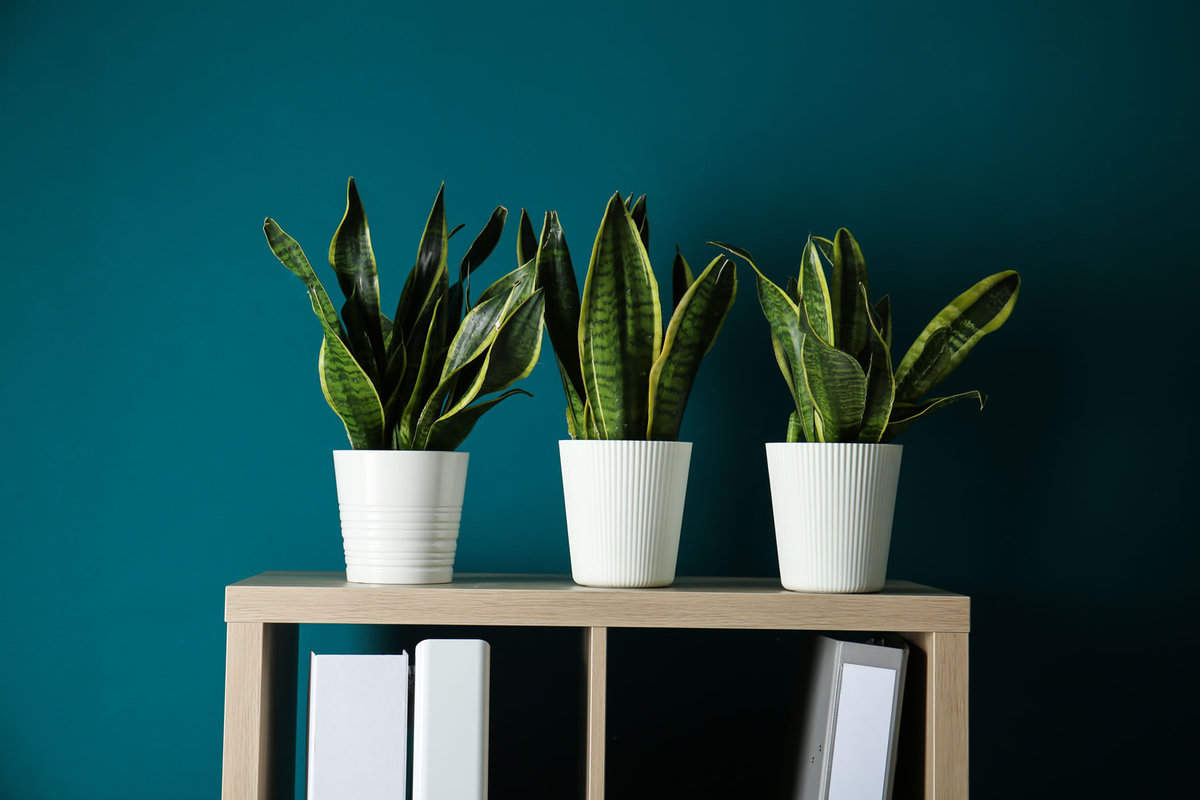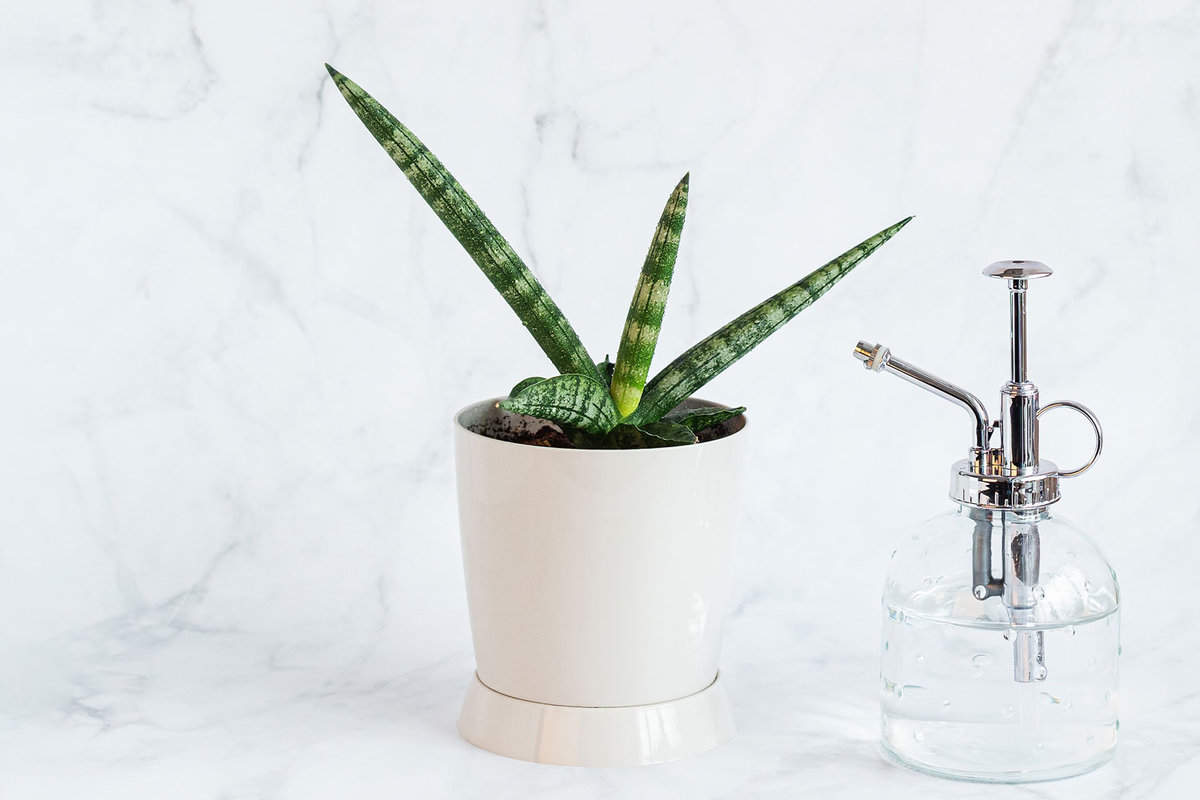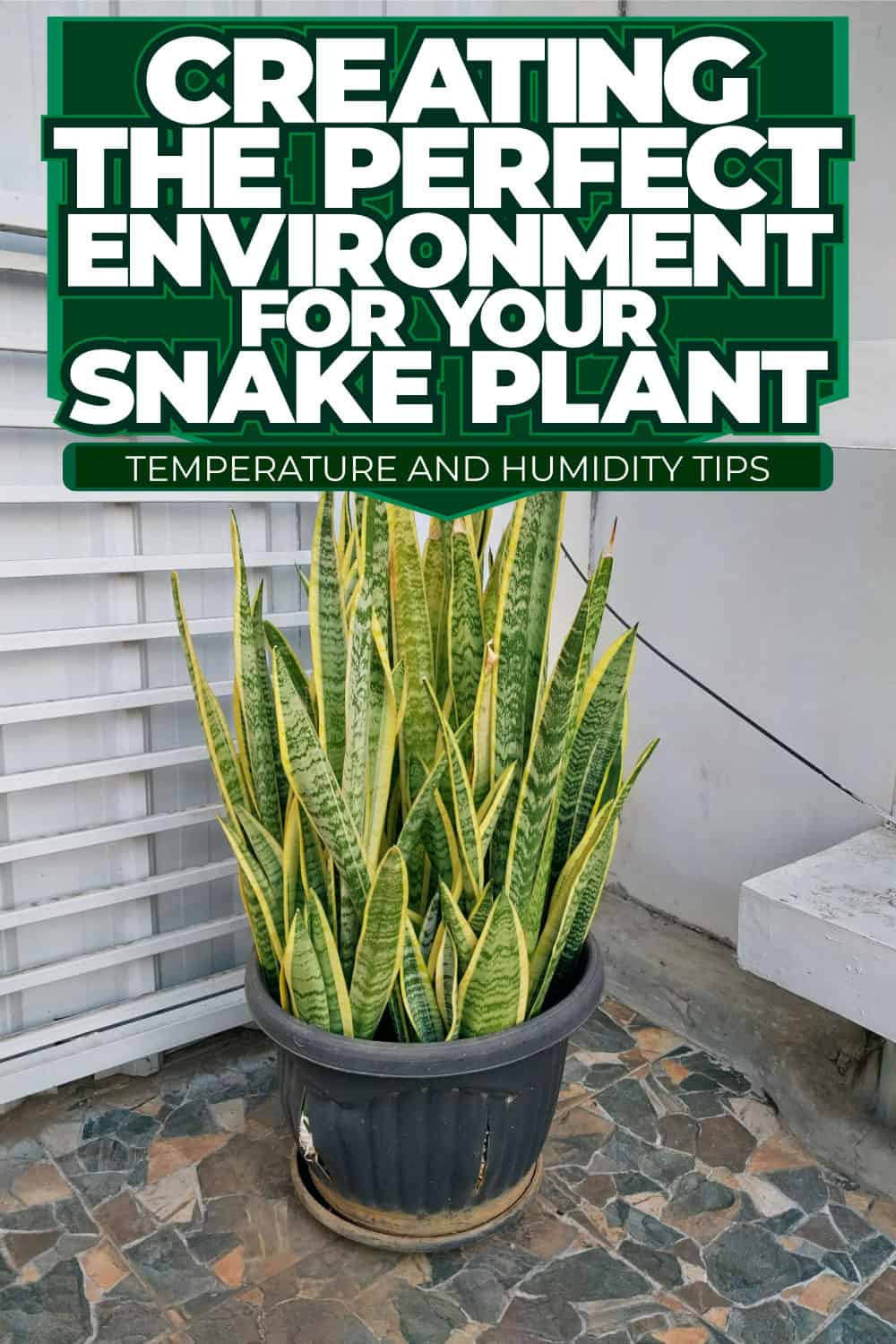Are you a plant lover looking to add a snake plant to your collection? Or maybe you already have one and want to ensure it's thriving in the perfect environment?
Establishing the ideal conditions for your snake plant is crucial for its growth and health. Snake plants are favored for indoor spaces due to their minimal care requirements and distinct aesthetic.
They flourish in various temperatures and thrive in specific humidity conditions, making them adaptable to many indoor environments.
However, understanding the nuances of temperature preferences and humidity requirements can significantly enhance your snake plant's vitality.

In this guide, you'll learn the essentials of snake plant care, starting with monitoring those temperature and humidity levels. After all, even the sturdiest plants need a snug spot to reach their full potential!
Understanding Snake Plants
Snake plants, also known as Sansevieria, are popular for indoor houseplants due to their low maintenance and unique appearance.
Origin and Species
Snake plants are native to tropical Africa and belong to the Asparagaceae family. There are approximately 70 species of snake plants, each with unique characteristics.
Among the most common species are Sansevieria trifasciata and Sansevieria zeylanica, each with distinct care nuances despite their shared resilience.
Trifasciata flourishes in bright, indirect light, requiring water only when its soil is thoroughly dry, making it well-suited for various indoor settings.
Zeylanica adapts well to various lighting conditions and is slightly more forgiving of overwatering than its counterparts. However, it also prefers periods of dry soil between waterings and enjoys a little extra humidity.
Understanding the subtle differences in their preferences for light, water, and soil ensures the health and vigor of these commonly cherished species.
Unique Characteristics
One of the most unique characteristics of snake plants is their ability to survive in low-light conditions. They can thrive in your home's bright, indirect, and low-light areas.
Snake plants are also known for their air-purifying qualities, making them a great addition to any room.
Finally, snake plants are known for their long, upright leaves that resemble snakes. They come in various colors, including green, yellow, and silver, and can grow up to several feet tall.
Creating the Ideal Environment
You must create the perfect environment to ensure your snake plant thrives.

This means providing the right temperature and humidity levels.
Temperature Requirements
Snake plants can tolerate various temperatures but prefer temperatures between 65-80ºF.
Avoid large swings in temperature as well as hot and cold drafts. If the temperature drops below 55°F, it can cause temperature stress and damage your plant.
Therefore, keeping your snake plant away from cold drafts and air conditioning vents is essential.
On the other hand, direct bright sunlight can be too harsh for your snake plant, especially if you live in a tropical region. While they can withstand full sun and low light, indirect sunlight is ideal for a snake plant.
So, place your plant in a shaded area illuminated by afternoon sun in a clear blue sky.
Humidity Levels
Snake plants thrive in low/moderate humidity, 30-50%. The ideal humidity range for snake plants is between 40% to 60%.
This humidity level mimics their natural habitat and helps keep the leaves healthy and vibrant. However, they can also adapt to lower humidity levels, so don't worry if your home is not particularly humid.
Place a water tray near your plant or use a humidifier to boost the humidity levels. Improperly caring for your plant with water once a week can also help maintain the humidity levels around your plant.
But remember not to overmist!
Lighting Conditions
Snake plants prefer bright, indirect light but can also tolerate low-light conditions.
While direct sunlight should be avoided to prevent leaf scorching, positioning your snake plant near windows that facilitate the ideal lighting can greatly enhance its growth and health.
Selecting the right spot for your snake plant is crucial to its health and growth, with window orientation pivotal in providing the perfect light conditions.
South-facing windows offer the most light, suitable for snake plants during winter but may require relocation in summer to avoid too intense light.
East- and west-facing windows provide a balanced environment with direct morning or afternoon light, ideal for steady growth.
North-facing windows, offering consistent semi-shade, are perfect for avoiding direct sunlight risks. Seasonal changes in light intensity necessitate adaptive placement, and clean windows are crucial for maximizing light penetration.
Uncover key tips and expert advice in our article Can A Snake Plant Survive Direct Sunlight? to ensure your snake plant survives and thrives!
Watering Routine
Snake plants are drought-resistant and can go for long periods without water. Overwatering can lead to root rot, which can be fatal for your plant.
Water your snake plant only when the top inch of soil is dry. Usually, once a week or every two weeks is sufficient. Use a well-draining pot and soil to prevent water from accumulating in the roots.
Soil and Potting
Snake plants thrive in well-draining soil and prefer to be slightly root-bound. Repot your plant only when it has outgrown its current pot.
Use a pot slightly larger than the previous one, as too much space can lead to overwatering. A mixture of potting soil, sand, and perlite is ideal for your snake plant.
Troubleshooting Common Problems
If you notice that your snake plant is not thriving as it should, there might be some issues that you need to address.
Here are some common problems you might encounter with your snake plant and how to fix them.
Yellowing Leaves
One of the most common issues you might encounter with your snake plant is yellowing leaves. This symptom could be due to several factors, including overwatering, low light, or nutrient deficiencies.
To fix this issue, make sure that you are not overwatering your plant and that it is getting enough light. You can also fertilize your plant with a balanced fertilizer to provide the necessary nutrients.
Root Rot
Root rot is another common problem that snake plant owners may face. This issue is caused by overwatering, which can cause the roots to become waterlogged and rot.
Pests
Pests like spider mites, mealybugs, and scale insects can also affect your snake plant's health. These pests can cause damage to the leaves and stems and even kill your plant if left untreated.
You can use insecticidal soap or neem oil to prevent and treat pest infestations. You should also isolate any infected plants to prevent the spread of pests to other plants in your collection.
Final Thoughts
Creating the perfect environment for your snake plant is not rocket science! By keeping a few things in mind, you can ensure your plant thrives in its new home.
Following the simple tips outlined in this article, you can create a healthy and happy home for your snake plant. Remember to monitor your plant and adjust its environment as needed.


Thank you for the article, but I noticed a typo: “Mistreating” your plant with water once a week can also help maintain the humidity levels around your plant. I know you meant misting! lol.
Thank you for the information. My plant is 2 years old and is beautiful as well.
Was over watering her though. Again thanks for the helpful tips.